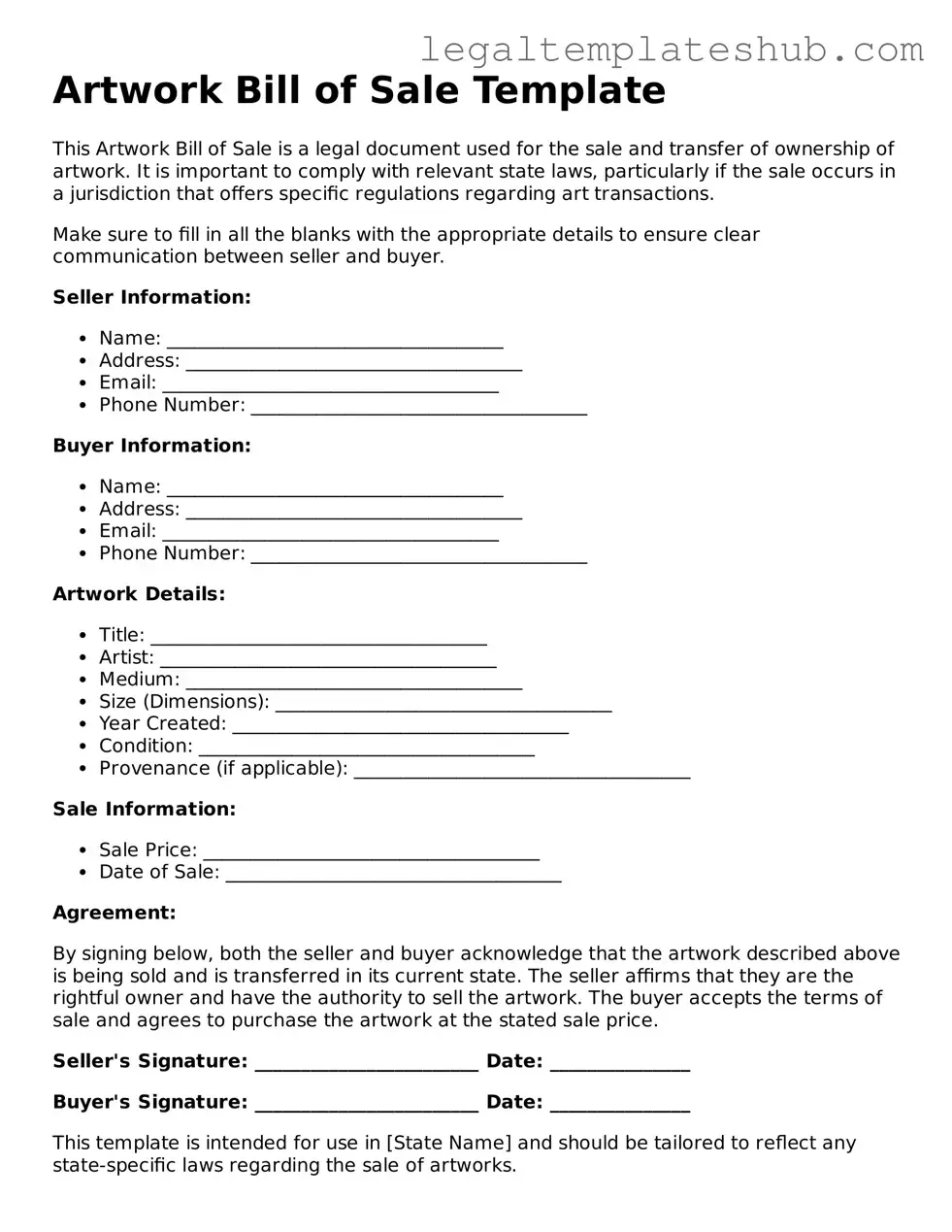Printable Artwork Bill of Sale Template
The Artwork Bill of Sale form is a legal document that facilitates the transfer of ownership of artwork from one party to another. This form outlines essential details such as the description of the artwork, the sale price, and the signatures of both the buyer and seller. To ensure a smooth transaction, consider filling out the form by clicking the button below.
Access Editor
